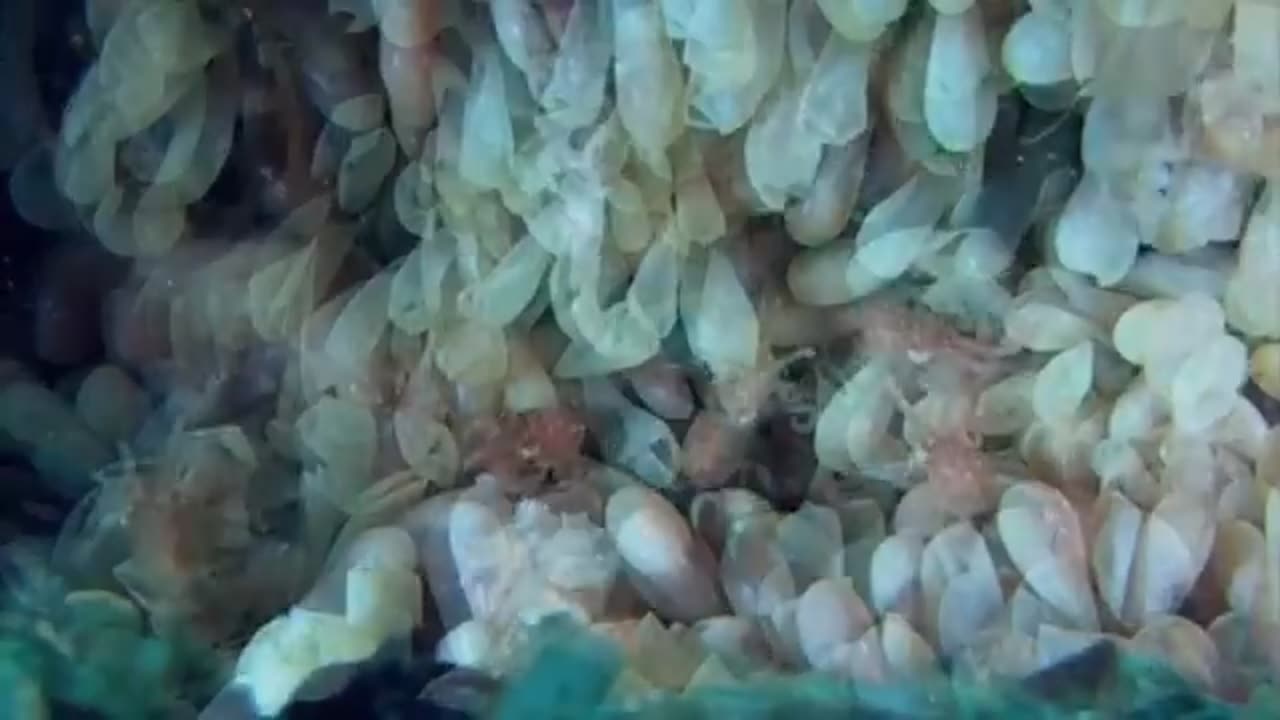Premium Only Content

Octopus egg
Octopuses are fascinating marine animals, but they don't lay eggs in the way many other creatures do. Octopuses are cephalopods, and their reproduction involves some unique characteristics. Here's a brief overview of octopus reproduction:
Mating: When it's time to reproduce, male and female octopuses typically engage in a courtship ritual. The male transfers a packet of sperm, called a spermatophore, into the female's mantle, where she stores it until she's ready to fertilize her eggs.
Egg-laying: Female octopuses lay their eggs in a protected location, such as a den or crevice. They carefully attach the eggs to the substrate, creating clusters of eggs known as egg strings. The number of eggs in a string can vary depending on the octopus species, but it can range from a few dozen to several hundred.
Egg protection: After laying the eggs, the female guards and cares for them diligently. She keeps the eggs clean and oxygenated by continuously blowing water over them. The female also prevents predators from approaching the eggs and may not eat during this period.
Senescence and death: Caring for the eggs is a physically demanding process for the female. As the eggs develop and hatch, the female's energy is gradually depleted. She may stop eating and become weaker. After the eggs hatch, the female octopus typically dies, as this marked decrease in energy expenditure during the brooding process is believed to be a natural part of their life cycle.
It's important to note that octopus reproduction can vary between different species, and the details may differ. Octopuses have a short lifespan, and many aspects of their life, including reproduction, are complex and interesting subjects of study in marine biology.
-
 1:09:19
1:09:19
Ami's House
1 day ago $0.03 earnedWhen Defending Israel Backfires: Are We Pushing Our Last Friends Away? With Karys Rhea
58K30 -
 10:40
10:40
Nikko Ortiz
16 hours agoMilitary's Best Fights And Fails
108K14 -
 17:54
17:54
Dr Disrespect
1 day agoDR DISRESPECT vs VAN DAMME in Hitman 3
113K13 -
 2:18:15
2:18:15
Side Scrollers Podcast
20 hours agoBlizzard BANS Player for Saying “n00b” + Cracker Barrel Ends PRIDE Funding + MORE | Side Scrollers
57.1K27 -
 19:54
19:54
GritsGG
16 hours agoMAX SR Win on Warzone! Ranked Tips for Loadout & Landing Spot!
15.7K -
 LIVE
LIVE
Lofi Girl
2 years agoSynthwave Radio 🌌 - beats to chill/game to
302 watching -
 44:41
44:41
Inverted World Live
15 hours agoPolitical Violence in Minnesota w/ AK Kamara
168K19 -
 6:29:40
6:29:40
SpartakusLIVE
15 hours ago#1 Massive MEAT-HEAD can't stop WINNING, can't stop FLEXING
89.1K -
 5:09:25
5:09:25
Drew Hernandez
15 hours agoGIDEON AI THREAT DETECTION SOFTWARE PUSH & NEW EPSTEIN EMAIL LEAK?
61.2K27 -
 2:03:51
2:03:51
TimcastIRL
11 hours agoTrans Minneapolis Shooter BLAMED Massacre On Mom & Gender Transition | Timcast IRL
200K379